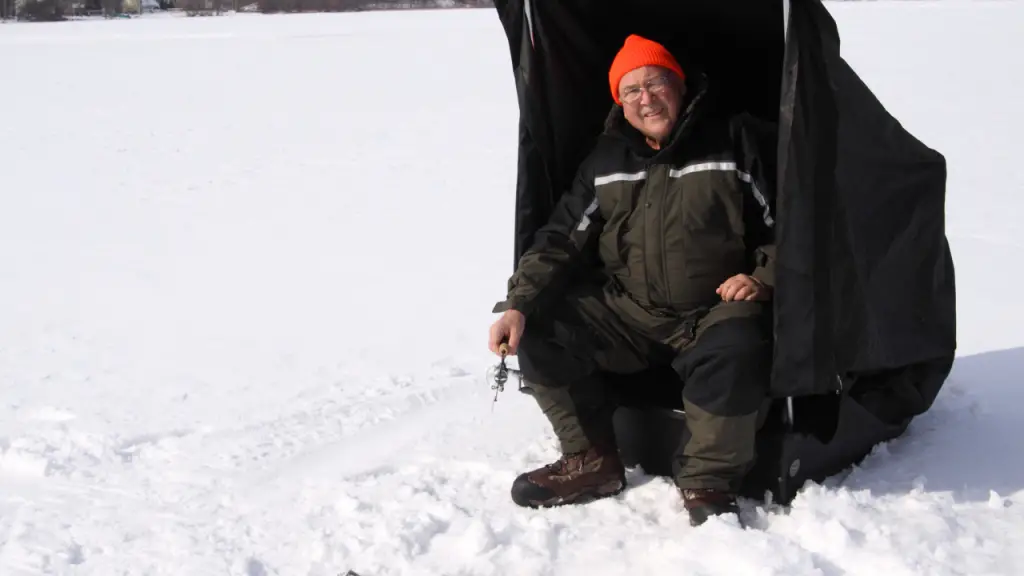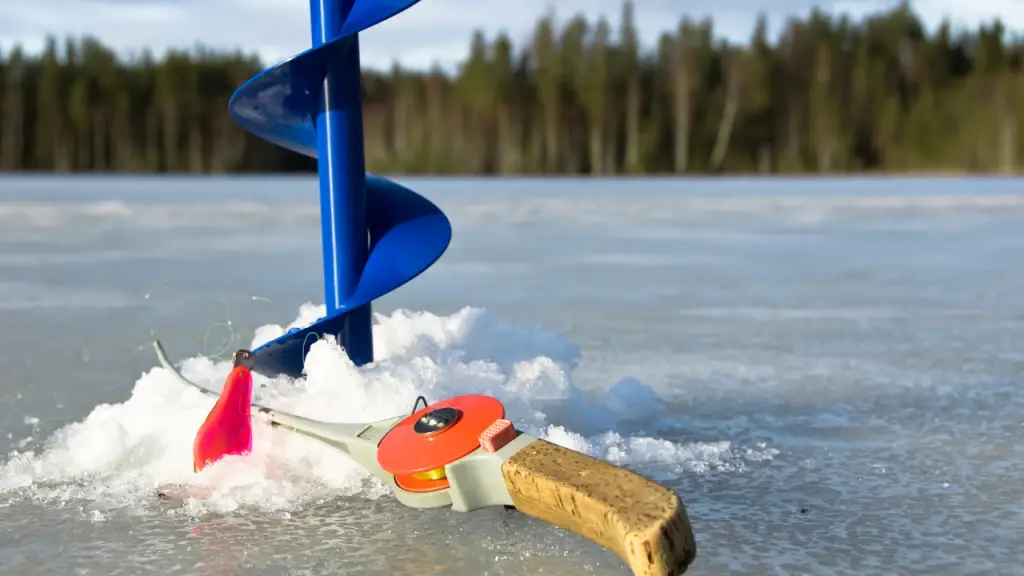Ice fishing is one of the oldest forms of fishing, a traditional New England pastime. It can be a great way for beginners to get into the sport or an experienced angler to try something new. Ice fishing doesn’t require much equipment, but it does take some preparation to be safe and successful!
This article will cover everything you need to know about ice fishing with safety tips and essential gear you’ll need before you head out on your adventure!

Ice Fishing Safety Tips
Ice fishing requires a lot of patience. It’s best not to be in a hurry when ice fishing, and that is especially important for safety reasons! Make sure you have the proper gear before you get on the ice and wear it all at all times. Take your time setting up with an eye towards making yourself as safe as possible while out there waiting for fish to bite. If something feels unsafe or looks suspicious, don’t do it! Get off the ice immediately if you’re unsure about anything so you can stay completely injury free during this winter activity.
Be prepared: Always carry essentials like snacks, warm clothes, gloves/mittens/handwarmers (depending on climate), water bottle
Ice Fishing Safety Gear

Fishing on a thick ice is not the only way to protect yourself from anything that might happen. A few safety items will go a long way in making sure you have an enjoyable and stress-free outing. The following items are safety essentials when heading out to ice fish:
- Life jacket
- Metal cleats for traction on the ice
- Hats and gloves are crucial for staying warm when out fishing in cold weather
- An extra layer of clothing will keep your body heat from escaping as quickly while letting you stay comfortable and relaxed all day long
- An ice spud to check the ice ahead
- Whistle lanyard to signal for help
How to Find a Good Ice Fishing Spot

Just like any other kind of fishing, understanding the particular body of water and what species live there is the first step to gaining an advantage.
Experienced anglers know that, during the early stages of ice formation on a lake, fish like to feed in exactly the same spots they did before. To take advantage of this knowledge and catch more fish themselves, experienced anglers mark these locations with their fish finders so they can go back once all signs of open water have been covered by an icy layer.
During mid-winter, fish like to move into deeper waters where it’s not as cold. If you’re on a lake for the first time, try fishing the basin or steepest shoreline you can access. Bigger fish like look around water that is less deep and colder during early morning and near sundown so if your goal is just catching more than one type of large winter bass – keep an eye peeled!
As always, you may also want to ask at your local bait shop before heading out for tips from those who have been there before in case they know some secret spots.
How to Make an Ice Fishing Hole

You’ve found your perfect fishing spot, that’s great! Now you need to start drilling.
To make an ice fishing hole, you’ll need either an ice chisel(ice spud),a manual auger, or a gas powered auger to cut through the ice. Drill a hole about 8-10 inches wide. After you drill your ice, use an ice skimmer to remove the chunks of leftover pieces.
Ice Fishing Techniques
There are four main techniques used for fishing on ice. Tip-ups, Spearfishing, Jigging, and Clubbing
1.Tip-Ups
Tip-ups are stationary fishing devices that use a flag to indicate when the fish is on the bait.
The downside to using a tip-up for ice fishing is that it does most of the work. The good thing about these devices is they allow you to cover more ground without needing to babysit your offering at all times, which can be quite time consuming and inefficient.
2. Spearfishing
Spearfishing involves using a metal spear with or without an attached line, usually under clear ice and in warmer water than most other forms of winter fisheries.
3. Clubbing
This method is uncommon is a bit hardcore
Clubbing is the art of stalking a fish from above the ice in shallow water and striking down on the ice with your club once you find your target. The hope is that the intense strike on the ice stuns the fish and then gives you time to drill a hole and then catch the fish. There’s the reason why this method is uncommon nowadays.
4. Jigging with a Spring Bobber
Jigging is by far the most involved technique for ice fishing.
All you need is a short and light rod no more than 30 inches long and preferably fluorocarbon line
The spring bobber is very helpful when ice fishing. It’s a lot more sensitive than a regular bobber, so you’ll be able to notice even the slightest pull. Not only that, but the spring bobber also dampens your jig movement and mimics bait movements much better.
Adding some meat to the jig will always up your odds, so tip the hook with a mealworm or small piece of night crawler
Ice Fishing Gear Essentials

- Small 2-3 foot rod or Tip-Up
- Fluorocarbon Line
- Ice Auger
- Fish Picker
- Ice Scooper
- Chair
- Sled
- Bucket
What to do next?
When the freezing weather hits, don’t stay stuck inside with your Netflix account. Pack up a sled and head out to a local fishing spot near you using the Fishing Near Me Map provided by Take Me Fishing!










